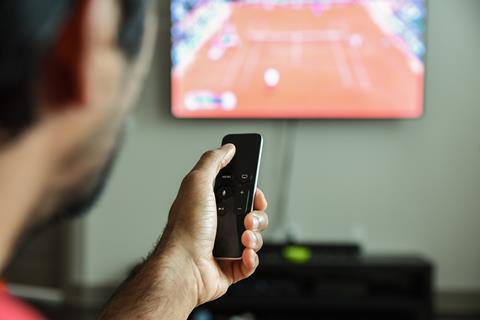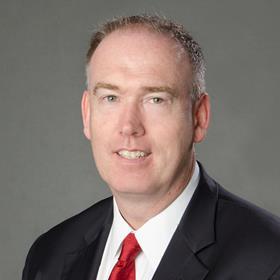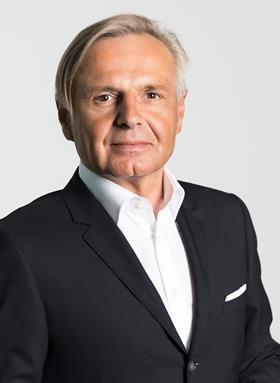The capabilities of smart technology are paving the way for futuristic home, experts explore the challenges and rise in the demand for connected and integrated devices.

In a global first, Dolby Laboratories announced its partnership with Huawei in October this year promising to deliver its first IPTV set-top box supporting high dynamic range (HDR) technology and greater brightness, contrast and a palette of richer colours.
This new entertainment experience promises to transform the TV in a similar way to Dolby’s cinema innovation.
The evolution of technology is rapidly advancing to meet the audience demand for personalisation, voice integration and connected experiences.
Futuresource Consulting Market Analyst Filipe Oliveira explained how the rise of smart technologies is leading in consumer electronics followed by a demand for smart appliances.
The consumer demand for smart connectivity and interoperable integration of devices in the home is particularly prevalent.
Arris CTO of Customer Premises Equipment Charles Cheevers told IBC365 the demand for connected smart devices continues to grow year-on-year with proven concepts to benefit consumers at large with genuine applications of connectivity quicker than most technology innovations.
He said: “Smart home technologies or the IoT is all about interconnected devices that automatically work together, with as little intervention as possible.
“The current trend towards voice and audio-focused interfaces help to enable this and they will only continue to develop at a rapid pace.
“The clearest example of this is the popularity surrounding devices such as the Amazon Echo, and Google Home.”
He continued: “The TV, in conjunction with the set-top box, can become the centre of the IoT home, given its established central position within many houses and apartments.”
Future capabilities
Frictionless experiences are key to success and the integration of smart assistants recognising voice in a streamlined and minimalistic design is the way technology is expected to evolve with voice personalisation and smart integrations.
Cheevers said: “In order to minimise the amount of wires and clutter within the home, we expect to see the set-top as the perfect IoT hub and smart assistant.
“In the next 12 months, I expect to see a move away from single-use screens such as control panels, computers, mobiles, tables and TV, and have the ability to control devices from anywhere, inside or outside the home.”

Consumers expect smart technologies they install at home to be interoperable and ready to use.
According to Futuresource research the demand in the United Kingdom, the United States and South Korea is for smart home hubs for voice personal assistant (VPA) technology with the global market reaching 52 million units in 2017, while the demand in China is particularly strong on smart appliances.
Voice integration has expanded from Amazon’s Alexa and Google’s Assistant into set-top boxes and media streamers. It is expected smart technology will be embedded into smart homes from media technology to appliances with LG and Samsung leading the charge.
Ruwido Austria Chief Executive Ferdinand Maier told IBC365: “There is increasing demand in smart technologies in Europe and North America, especially with audiences that are used to having access to almost everything in an instant using applications on their smartphone.”
The remote control is a central point of activity in the home, Maier explains, smart and connected control is essential.
He said: “In the near future, we’ll see combinations of different modalities that will make interaction with TV more enjoyable and natural than in the past. Multimodal input devices combined with additional sensing technologies support user recognition and thus personalisation of TV content, that can enhance people’s day-to-day lives.
Voice assistants are positioned to be the next-generation interface, crossing over many verticals and applications. The futuristic smart home has the potential to galvanise an otherwise fragmented space whilst unleashing media and other functionality.
Oliveira said: “Smart home has the potential to cement longer-term relationships between consumers, vendors and service suppliers.
“The benefits for industry players include new category opportunities in the saturated consumer electronics market. Service providers use the smart home to tie their customers into subscription-type services.”
Challenging the inconsistency
The experience of bringing together devices across the home is fragmented and unreliable. The use of IP and the cloud could solve the connectivity issues between linking devices in connected experiences.
Cheevers explained the importance of creating meaningful IoT experiences.
He said: “The aim is to build applications that operate agnostically, working across different products and protocols, to ultimately make smart devices and the IoT serve the home and not just device manufacturers.”
The fragmented user experience is improving and manufacturers are responding to the expectations of integrated smart devices.
The development and demand will likely see more smart control units in combination with smart phone and tablet apps.

Maier predicted: “An increasing number of TV and entertainment devices will be connected, especially with the trends of consuming and streaming more music.”
Allowing companies to focus on the most valuable data collection points and how it could benefit consumers and operators alike.
Cheevers explained: “We see the economics of IoT improving, there is potential for European operators to provide a camera, or thermostat package for consumers at under 10 euros a month, with return on investment after 12 months. This could prove hugely beneficial for both the consumer and operator as a single converged experience.”
Demand for the ability to control connectivity from any location at any time raises obstacles for providers in managing the data to align with human behaviour and overall provide a meaningful experience.
Amazon has successfully achieved this with Alexa, who is seen as a personal entity within a connected smart home, holding a persona and reliable connectivity and delivery of demands.
Maier said that vast amounts of data is helpful and is the key is to identifying meaningful behaviour.
He said: “We believe in the power of human behaviour and observing it to understand how the large amounts of data can be used to provide interesting and supportive new services.
“Our data-driven design and development principles combine artificial intelligence (AI) with behavioural data and user-modelling to be able to support future smart device services.”
The industry looks to be at the start of the hype curve Oliveira explained, market adoption and annual growth is predicted to grow in the next five years.
He said: “Within the smart home, high unit prices, lack of interoperability and low consumer awareness have presented the main challenges.
“A crowded competitive landscape and a strong volume growth are bringing prices down and therefore addressing the high cost barrier.”
Futuresource expects average retail prices for Smart Home devices which include security and monitoring, smart hubs and control devices, lighting systems and climate control to decline by 9% globally in 2018.
Read more Ruwido’s IBC2017 Technical Paper on Authenticating the TV user by biometric continuous measurement
























No comments yet